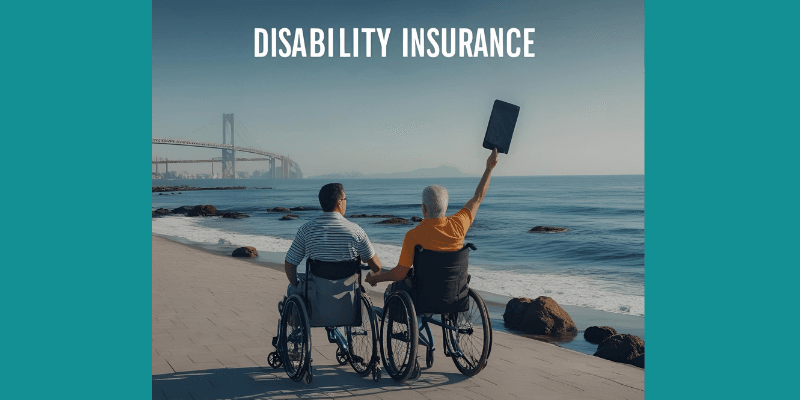Understanding Disability Insurance: A Complete Guide

Disability insurance is a financial safety net designed to protect your income if you become unable to work due to illness or injury. Whether short-term or long-term, disability insurance ensures you can cover living expenses, medical bills, and other financial obligations. In this guide, we’ll explore the types of disability insurance, how it works, and why it’s essential for financial planning.
Table of Contents
What Is Disability Insurance?
Disability insurance replaces a portion of your income if you’re unable to work due to a qualifying disability. Unlike health insurance, which covers medical expenses, disability insurance focuses on income replacement. Policies typically pay between 50% and 70% of your pre-disability earnings.
According to the Social Security Administration, over 25% of today’s 20-year-olds will experience a disability before retirement. Despite this, many Americans lack adequate coverage, leaving them vulnerable to financial hardship.
Types of Disability Insurance
1. Short-Term Disability Insurance (STD)
Short-term disability insurance provides benefits for a limited period, usually 3–6 months. It’s ideal for temporary conditions like recovery from surgery or minor injuries.
2. Long-Term Disability Insurance (LTD)
Long-term disability insurance kicks in after short-term benefits expire and can last for years or until retirement. It covers severe conditions like chronic illnesses or permanent disabilities.
3. Employer-Sponsored vs. Private Policies
Many employers offer group disability insurance, but coverage may be limited. Private policies offer more customization and portability if you change jobs.
How Disability Insurance Works
To qualify for benefits, you must meet the policy’s definition of disability, which varies:
- Own-Occupation: Pays if you can’t perform your specific job.
- Any-Occupation: Pays only if you can’t work any job.
Other key terms include:
- Elimination Period: The waiting period before benefits start (e.g., 30–90 days).
- Benefit Period: How long payments continue (e.g., 2 years, 5 years, or until age 65).
Why You Need Disability Insurance
Without disability insurance, a sudden disability could devastate your finances. Consider:
- Medical bills and rehabilitation costs.
- Daily living expenses (mortgage, groceries, utilities).
- Lost retirement savings due to interrupted contributions.
Disability insurance provides peace of mind, ensuring you can maintain your lifestyle even if you can’t work.
How to Choose the Right Policy
Follow these steps to find the best disability insurance:
- Assess Your Needs: Calculate your monthly expenses to determine coverage amount.
- Compare Policies: Look at premiums, benefit periods, and exclusions.
- Check the Insurer’s Reputation: Research customer reviews and financial stability.
- Consult a Financial Advisor: Get expert advice tailored to your situation.
Common Misconceptions
Myth 1: “Workers’ Compensation Covers All Disabilities”
Workers’ comp only applies to work-related injuries. Disability insurance covers off-the-job illnesses and accidents.
Myth 2: “I’m Young and Healthy—I Don’t Need It”
Disabilities can happen at any age due to accidents, illnesses, or chronic conditions.
FAQs About Disability Insurance
Q: How much does disability insurance cost?
A: Premiums typically range from 1% to 3% of your annual income, depending on age, health, and occupation.
Q: Can I get disability insurance if I’m self-employed?
A: Yes! Many insurers offer policies tailored to freelancers and business owners.
Final Thoughts
Disability insurance is a critical component of financial security. By understanding your options and choosing the right policy, you can protect yourself and your family from unexpected setbacks. Don’t wait—explore disability insurance today to safeguard your future.
Need help finding the right disability insurance? Compare quotes from top providers and secure your financial future now.